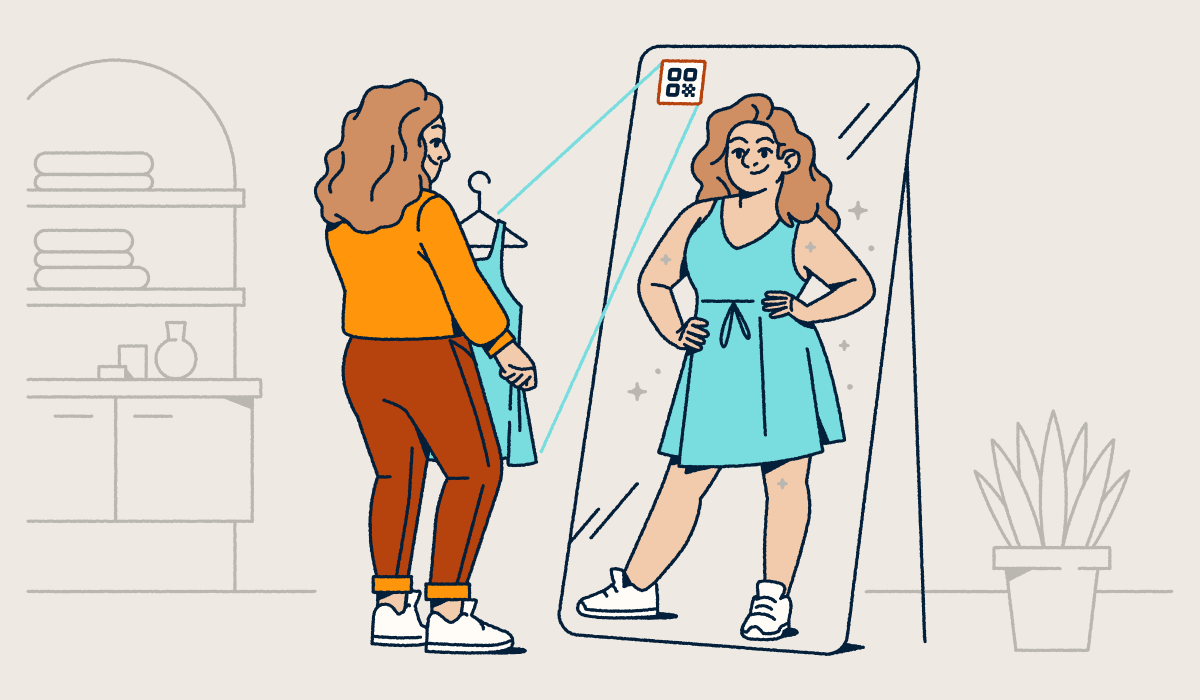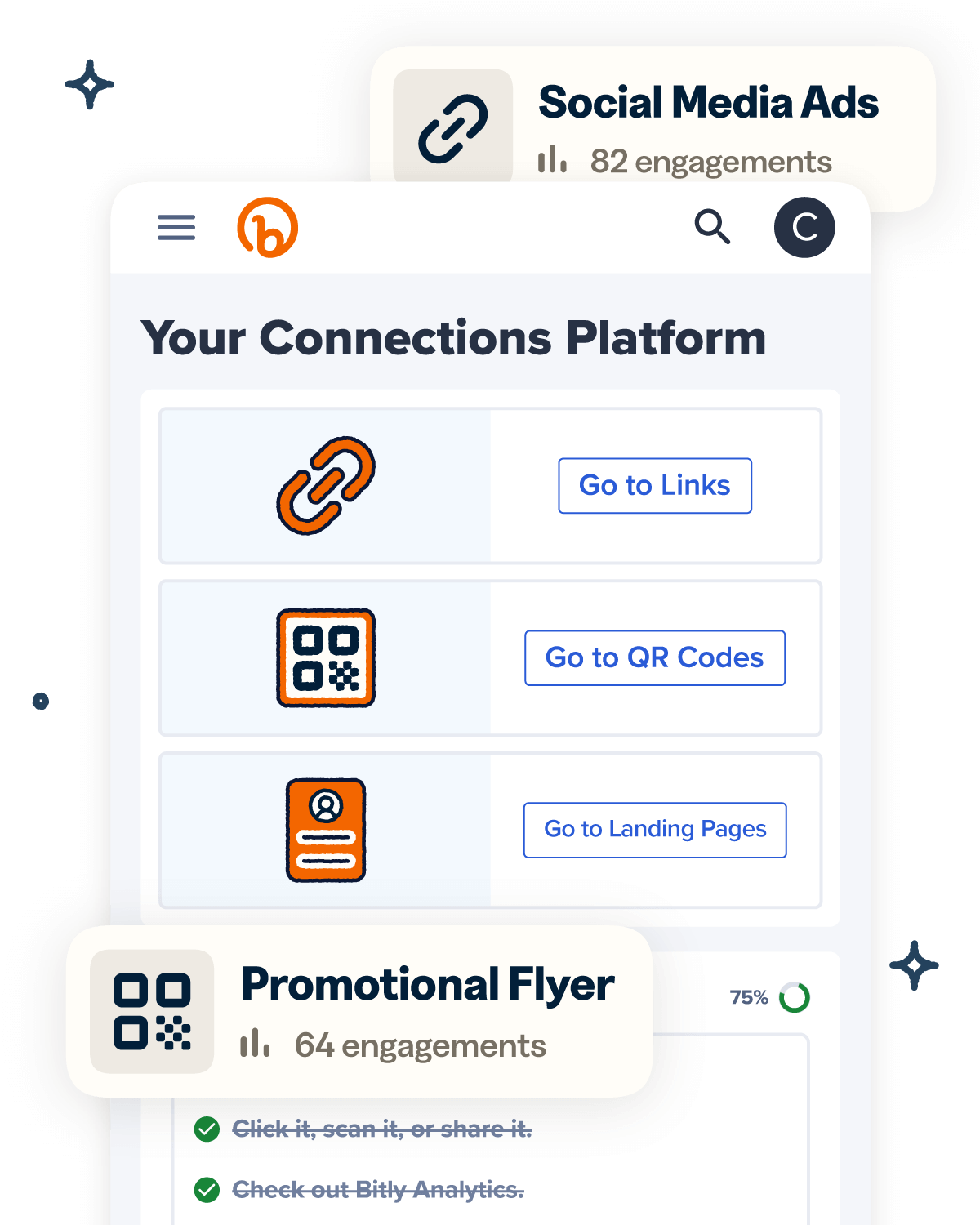Today’s customers expect retail experiences to be fast, flexible, and mobile-friendly, especially when moving between physical and digital channels. Small moments of friction, like long waits, confusing signs, or hard-to-find product information, can chip away at satisfaction and loyalty.
QR Codes offer a simple, high-impact way to close those gaps. With a quick smartphone scan, they can connect shoppers to digital content that saves time, adds value, and keeps the experience moving.
Here’s how your retail brand can use QR Codes to deliver faster, more convenient shopping experiences without adding complexity to your in-store operations.
Note: The brands and examples discussed below were found during our online research for this article.
Why customer experience matters more than ever in retail
Modern retail success hinges on delivering smooth, personalized, and connected interactions across every channel. Your customers are juggling busy schedules and facing more choices, making a smooth, connected shopping experience essential.
Poor experiences like long lines, unclear product info, or a disconnect between print and digital retail marketing can quickly erode trust. Over time, this can lead to customer drop-offs, lost loyalty, and even a shift to your competitors.
In today’s retail market, investing in the customer experience is no longer optional. It’s a key driver of satisfaction, brand reputation, and long-term growth.
Customer expectations are higher than ever
Widespread access to technology has raised the bar for consumer expectations. Shoppers want immediate answers, mobile support, and seamless service—especially when they’re in-store. In fact, 80% of consumers now say the experience a company provides is just as important as its products and services.
QR Codes offer a simple, scalable way to meet these rising demands, but only if they deliver clear, meaningful value with each scan. Customers look for every interaction to save time, offer support, or enhance their shopping journey.
As Luke Reynebeau, Vice President of Customer and Retention Marketing at Bitly, explains, “Customers are less likely to participate in technology just for novelty’s sake. The exciting experience is what the QR Code unlocks.”
Omnichannel experiences are the new normal
Shoppers aren’t limited to the products in their local stores. They’re actively looking for hybrid retail brands that facilitate seamless movement between physical and digital channels.
Even fast-moving consumer goods (FMCGs) require an average of 3–5 touchpoints before purchase, while luxury brands can reach 20+, highlighting the importance of a cohesive omnichannel strategy.
Many shoppers also practice showrooming, testing products firsthand before buying online to find better prices or promotions. For big-ticket items like furniture and electronics, this approach gives customers more time to weigh their options before committing.
QR Codes make these transitions seamless, helping brands stay connected throughout the entire customer journey. “QR Codes are the bridge from physical to digital,” says Reynebeau. “They help extend the store experience even after a shopper walks out the door.”
Self-service options reduce pressure on store staff
Today’s shoppers expect faster, more convenient service, and many are willing to help themselves to get it. Around 77% now choose self-checkout when it’s available, valuing the ability to skip lines and move at their own pace.
But self-service options don’t just improve customer satisfaction. They also ease the pressure on retail teams, giving employees more time to answer complex questions and manage busy periods, even with leaner staffing.
QR Codes can make self-service simple by giving shoppers instant access to the information or actions they need, without waiting for staff. “You don’t need to interact with an employee,” says Reynebeau. “The QR Code lets customers take action on their own time, in their own way.”
There are plenty of ways to use QR Codes in retail to support self-service and enhance the in-store experience. With a quick scan, shoppers can access product details, find support resources, explore interactive content, or even complete payments—all without waiting in line or flagging down staff.
How QR Codes help improve the in-store experience
Implementing QR Codes at your brick-and-mortar locations can help streamline and enhance the in-person shopping experience. Use them to instantly connect customers to online resources like product details, exclusive offers, or additional sizes and colors.
Because in-store space is often limited, QR Codes let you offer more value without overwhelming shoppers with crowded signage or bulky screens. A single code can lead customers to a mobile-friendly landing page with everything they need.
You can place QR Codes at key touchpoints throughout the store, such as product displays, checkout counters, or even printed receipts, creating more opportunities to deepen the customer journey and build long-term brand loyalty.
Practical QR Code use cases that improve retail CX
Looking for ways to create a better in-store experience? We’ve compiled some of the top QR Code ideas for retail to help you boost customer satisfaction with minimal friction. These strategies work across a range of sectors, from apparel and grocery to electronics and beyond.
Link to product specs, reviews, or comparison guides
Shoppers often want more information before making a purchase, especially when it comes to higher-ticket items. Adding QR Codes to shelf tags, signage, or displays can give customers instant access to product specs, reviews, and comparison guides.
Having details at their fingertips builds confidence and can even help boost customer satisfaction—62% of shoppers say that having accurate product information up front would lower the chance of them making a return.
This is especially valuable for considered purchases like vehicles. For example, an e-bike store or EV showroom could place QR Codes that link to geotagged maps of charging stations nearby, helping customers picture how these products fit into their daily routines.
Offer exclusive content or rewards
QR Codes make it easy to offer in-store-only perks that boost engagement and build brand loyalty. You can link your customers to exclusive discounts, early access to new products, or bonus content from popular influencers, all with a single scan.
There’s plenty of room for creativity, too. A café could use mobile landing pages to deliver time-of-day offers: coffee promos in the morning and wine specials in the evening.
Bitly Pages are a great way to house these experiences. With Bitly Pages, you can create a branded, no-code online hub where customers can access discounts, join loyalty programs, and explore your latest content in one convenient spot.
Connect to store maps or pickup instructions
QR Codes can also help customers navigate your store faster by linking to essential information like store directories or pickup instructions. This improves convenience, especially in larger or multi-department locations.
If you have multiple locations, you can create a Dynamic QR Code for each storefront with customized maps and details. That way, shoppers get directions and pickup info tailored to their neighborhood location, keeping the experience personal and seamless.
Support instant reordering or refill reminders
Beyond store displays, QR Codes work well on receipts, product packaging, or even the items themselves. You can link each code to a subscription page, replenishment form, or product reorder page to make future purchases fast and convenient.
Adding QR Codes to everyday items—especially essentials like skincare, supplements, and household goods—can help turn a one-time store visit into a repeat transaction.
Combining your QR Codes with Bitly Links makes this even easier. You can create a branded, trackable short link for each product that customers can use to place repeat orders. You can also pair Bitly with custom APIs to redirect customers based on their location, device type, or campaign.
If inventory shifts, Bitly’s Dynamic QR Codes also let you update the destination URL at any time, so you don’t have to constantly reprint to keep your reordering experiences current and seamless.
As Reynebeau notes, “If you printed 4 million postcards and the link breaks, that’s a bad experience. But if it’s a Dynamic QR Code, you can fix it in seconds with a redirect.”
Invite real-time feedback during the visit
Customer feedback is invaluable for shaping better experiences. Place QR Codes near checkout counters or fitting rooms to invite shoppers to share feedback while their experience is still fresh.
“You can scan a QR Code to join a loyalty program or give feedback while waiting at the counter,” says Raynebeau. “It makes the experience more efficient and more engaging.”
Real-time input doesn’t just boost customer satisfaction scores. It also gives your team the insights needed to address concerns quickly, spot trends, and continually refine the customer journey.
How to measure the impact of QR Code CX initiatives
Retail marketing best practices emphasize the importance of tracking performance, and QR Codes make it easy to connect in-store interactions with digital engagement insights. With tools like Bitly, you can monitor scan activity in real time and get a clearer picture of how shoppers are interacting with your campaigns.
Depending on your plan, you can use Bitly Analytics to track both overall scan volume and scans by location (city and country), device type (iOS/Android), and referrer. These insights can help you fine-tune your strategies based on what’s working on the ground, not just online.
For even deeper insights, you can add UTM parameters to your Bitly Links before embedding them in your Bitly Codes. This allows you to track the full customer journey across both offline and online touchpoints. To do this, you’ll need to integrate Bitly with other analytics platforms that have UTM tracking features.
When someone scans your QR Code, their UTM data is passed into your analytics platform (like Google Analytics), giving you visibility into traffic sources, behaviors, and conversions tied to specific campaigns.
Upgrade your retail experience with Bitly
Today’s retail landscape demands flexible, seamless, and connected customer experiences. QR Codes can help you meet those expectations by linking in-store interactions with digital content, real-time updates, and personalized support, giving shoppers more value at every touchpoint.
Bitly gives you the tools you need to make it happen. Create branded, trackable QR Codes, customize Bitly Links for better trust and recall, build no-code mobile-friendly Bitly Pages, and track scan and engagement metrics from one simple dashboard.
Whether you’re streamlining product discovery, boosting loyalty, or improving operational efficiency, Bitly makes it easy to adapt and grow with your customers’ needs.
Ready to create a smarter, more connected in-store experience? Sign up for Bitly today to turn every interaction into a stronger brand connection.


